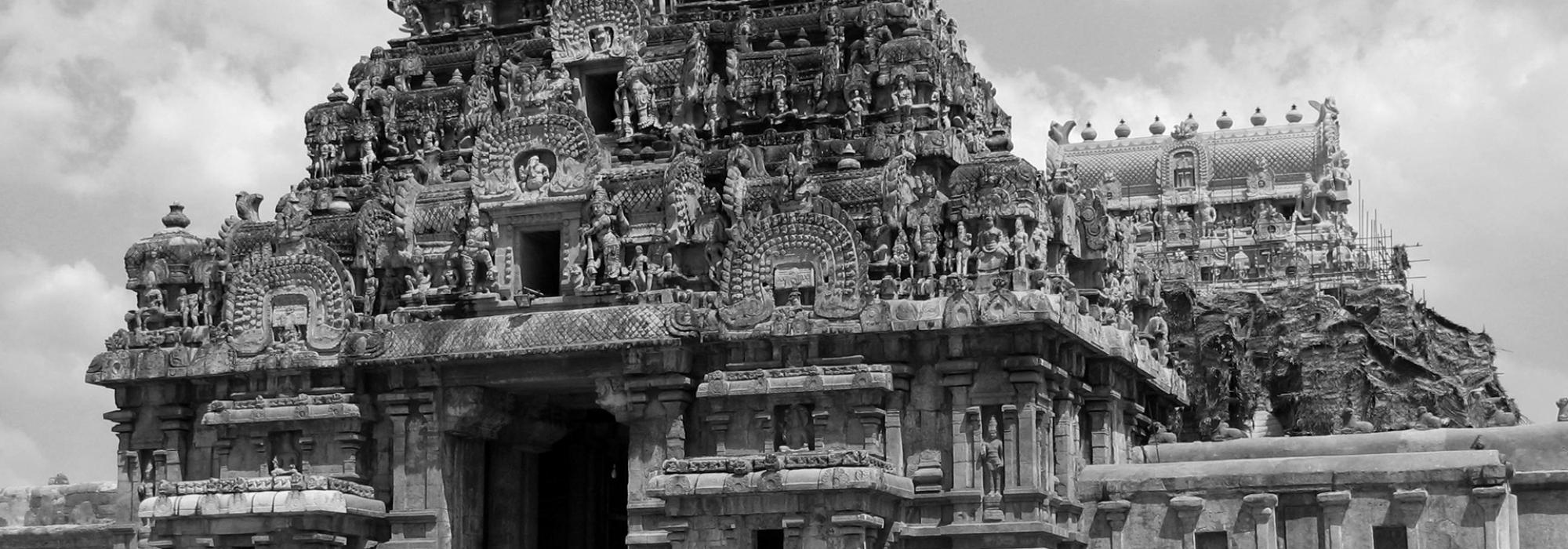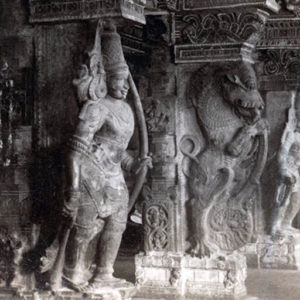How often have you heard this refrain or its variants: Naah! I don’t go to temples. I don’t like going to temples…I mean, there’s no point…all that noise, meaningless mantras and rituals…some are so unhygienic…I believe in God but I’m spiritual…after all, Hinduism is a personal religion and I don’t really need to go to a temple to pray…? How often have you yourself uttered this refrain? Answer honestly.
Admittedly, there’s a grain of truth in each of these bits. Several temples today are dirty, unhygienic, noisy, and appear meaningless and chaotic to everybody except the most devout howsoever much such devotion as a value in itself is commendable. Temple priests are less than honest and less than learned.
On the other side, most Hindus have tragically reduced temple-going to a base activity that comprises one or several or all of these: bribing the Deity; as a means of expiating individual sins—the most devout-looking devotees are your bribe-seeking bureaucrats; as an effort to cure diseases; as a quest to get a bride/groom/child. Of course, not all of these are objectionable or wrong per se. However, they are far inferior to the ones who visit temples as an end in itself. These are few and their numbers are ever-dwindling.
But what seems incredible is the fact that such criticisms have, far from diluting the fervor, only given birth to newer and newer temples. Indeed, Hindus have historically been prolific temple builders, an inherited cultural trait that continues unabated till date. What is your bet that even the most Committed Secularist Minister has donated money to and/or is a temple(s) trustee? That then is the key: it is an inherited cultural trait on which centuries of alien invasions and the current venom of secularism have failed make even an inch of dent. However, as things currently stand, this trait is admirable but it’s nothing to really celebrate because we’ve just retained the form, not the spirit.
Most people who utter such lofty-sounding nothings base their criticism about temple-going on ignorance. This applies in equal measure to those who are genuinely proud of Hinduism and to the Lamenting Hindus: those who see their revered sanatana dharma in a state of seemingly terminal decline but are unable to do anything to halt the decline. This also definitely applies to those Hindus who learn their Hinduism either from the Western Curators of Museum Hinduism or from the New Age Management Guru variety who’ve suddenly discovered their Hindu roots. This most certainly applies to those who pontificate that Hinduism = only its rich philosophy and similar ill-informed bunkum that actually does injustice to Hinduism. I care two hoots about these last categories simply because their extraordinary self-assuredness that they know everything there is to sanatana dharma is only matched by their arrogant disdain.
And so, the answer to the Lamenting Hindus is this: a well-thought out revival of the ancient and medieval Temple Culture is one of the major keys to revive and rejuvenate sanatana dharma itself. If the Vedas, the Upanishads, and the Dharmashastras provided the philosophical foundation and the Itihasas and Puranas the societal framework to sustain this foundation, it was the Temple Culture that spawned, incubated, nurtured, sustained, and spread sanatana dharma’s cultural and social milieu from time immemorial.
The origins of the Temple Culture date back to the Vedic concept and practice of yajna. The word yajna is incorrectly translated as sacrifice while in both spirit and practice, it was an elaborate ritual of sharing—a ritual where all communities and strata of society came together and offered (not sacrificed) their material and non-material services for the welfare of the country. It was an act of strengthening human, social and national bonds on an epic scale. A yajna was how the entire nation renewed its vows to itself.
A yajna wasn’t simply one monolithic ritual that went on for a specified number of days where some people chanted mantras while the rest just looked on. Music, dance, poetry, and the arts were inseparable elements of every yajna. Indeed, the root of pretty much all forms of poojas and other rituals that Hindus perform today is the yajna. The purohita who calls upon people to sing towards the end of say, the Satyanarayana puja is simply continuing the same practice that was followed in yajnas conducted thousands of years ago.
As the Vedic culture evolved and gave us the concept of murti puja (incorrectly translated as idol worship), yajna gradually found an organic expression in the form of the Temple Culture. A temple in spirit wasn’t just a place for people to worship and return home: it was simultaneously the center of education, the hub of the community and the city, the home of the performing and literary arts, and the platform for free and fair social and political discussions and debates.
The plan, design, and structure of almost all classical and medieval temples was well-defined, scientific and followed the rules of Indian architecture laid down in the Shilpashastra texts. A visit to any of these still-surviving temples makes it clear that areas are earmarked for specific purposes: dormitories for pilgrims, halls for debates and allied activities, a yajna shala, a natya shala, the water tank, platforms for students to take their lessons…the actual temple itself forms a small part of this grand architectural scheme. Varanasi is in fact one massive temple that contains hundreds of mini-temples within its walls.
Perhaps the greatest contribution of the Temple Culture is in the field of our classical performing arts. Indian classical music and dance primarily evolved from and were refined over hundreds of years in the confines of thousands of temples all over the land. It is a truism in the realm of Indian classical performing arts that the performing art dies when its last practitioner dies without leaving behind a successor. No amount of notations will substitute the guru-shishya tradition that alone sustains our classical performing arts. It is the Temple Culture that sustained this guru-shishya tradition by granting the guru the material prosperity and social respect to perpetuate his/her art to posterity.
The Temple Culture indeed produced superior human resources required to sustain not just these endeavors but, indirectly, a kingdom itself. It produced ministers, advisers, strategists, artisans, and teachers. Those who unthinkingly call Madurai, Rameshwaram, Tanjavur, etc. merely as “temple towns” need to re-examine their statement in this light. It’s therefore unsurprising that almost all kings gave such large grants to temples and didn’t normally dip into temple wealth for sovereign uses.
And so, when a temple was destroyed, it also simultaneously destroyed every cultural facet of a kingdom. Notice the fact that today, very little of the classical tradition has survived in North India. This is the direct consequence of repeated and large-scale temple destruction by Mohammedan invaders (and the long spell of Mughal rule, which prevented Hindus from building new temples and from renovating/restoring existing ones). As far as the South is concerned, we see this phenomenon most prominently in Goa, whose original name is Gomantaka. Few temples have survived there and the classical tradition is almost non-existent.
Under Nehru, the Temple Culture was relegated to the dustbin with a really simple device—by putting temples directly under Government control as part of his poisonous project of de-Hinduizing India. This was even more malevolent because while it didn’t physically destroy temples, it ensured the same cultural outcome—the outcome which makes even staunch Hindus wear their non-temple-going as a badge of pride.
And then they wonder why classical music concerts and dance performances get no sponsorship. And they wonder why our native languages and literature are dying out. And they wonder why we don’t build such grand and artistic temples anymore.
And they close their noses at the stench within the temple not realizing that it emanates from the garbage that is their own ignorance.















































Comments